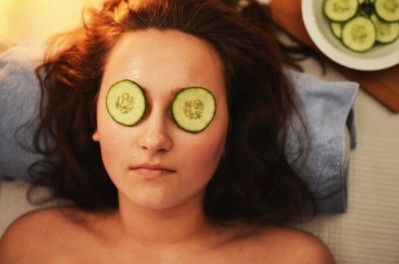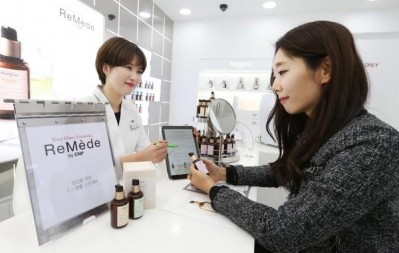in-cosmetics Global special
Customisation and cosmetics – the changing game of make-up

Customisation is big business in most industries. The idea of a tailor-made product created to a specific brief couldn’t be more appealing.
However, in some sectors the concept of customisation has only recently taken off. There has been talk of it for some time in the cosmetics industry – indeed Prescriptives launched one of the first custom-blended make up ranges for women in the late 70s – but it was eventually pulled from the shelves, perhaps at a time when the industry was all about the ‘one size fits all’ alphabet cream approach. Years later and customised cosmetics are back, taking the personal care market by storm.
But what are consumers really looking for?
The idea of having something personalised as opposed to created for the mass market is certainly part of the appeal. And when it comes to cosmetics and personal care, there can’t possibly be an all-encompassing approach that suits everyone perfectly.
In this sector, customisation is all about creating products which are personalised and address different people’s varying needs, whether this be the skincare results or the appearance of the colour.
Naturally, the first segments of the market to really embrace the concept of customisation are colour cosmetics and skincare. Consumers are now able to select products boasting smart packaging which can be adapted to fit specific skin tones.
Some brands sell their colour products with materials that the consumer can then use to adjust the shade e.g. Max Factor’s colour adapt foundation. In addition, moisturisers with ‘dial-up’ features which mean the product can be made stronger or weaker depending on a customers’ need are now de rigeur in many European countries. Taking this a step further, some brands have even set up pop-up bars offering customers the opportunity to select their base product and then personalise the aroma or remaining product features.
Market variation
While customisation is still in the relatively early stages in Europe, it is a well-established and popular concept in Korea. In September last year, one of Korea’s leading make-up manufacturers Amore Pacific launched its customised cosmetics service. The brand introduced a made-to-order lipstick service at one of its Seoul stores, and the promotion was so successful that every slot was booked in the two weeks leading up to its launch.
Colour cosmetic customisation in Korea is now firmly established and it is expected that this will quickly spread around the globe. However, personalised skin care products are expected to take longer to catch on in the rest of the world. Haircare is one segment that has not yet embraced customisation, however, early signs are that the concept will break ground in this area in the future.
Challenges: supply chain
The concept of customisation is not without its challenges. One of the main issues that companies need to overcome is surrounding logistics and product quantities. Personal care actives come in large quantities, so manufacturers need to create certain batch sizes to economise on the scale of raw materials they order.
So too with colour – colour is not easy to create or match so the consumer playing with colour needs a good base product to begin with and guidance on customisation. Once these challenges are overcome by a few leaders in the industry, it will become much more widespread.
Predictions for 2017
I believe we’ll see ground-breaking advancements in this area this year. Companies will come up with some innovative approaches to answer the call for customisation in exciting new ways. In particular, we’ll see serum concentrates and fragrances perform much better in this area. It’s an exciting year ahead, so watch this space!

















